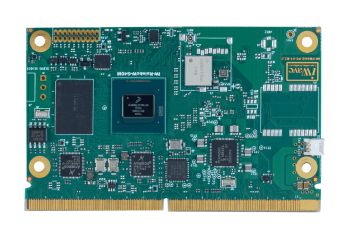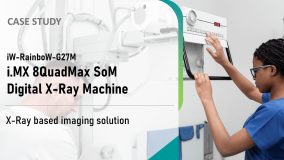- Products
- Automotive
- Avionics
COTS Module
- Agilex 7 SmartNIC Card
- Zynq RFSoC ADC DAC PCIe Card
- ZU7/ZU5/ZU4 PCIe SmartNIC Card
- ZU19/17/11 PCIe SmartNIC Card
- PCIe Switch Module
- PCIe to SD 3.0 M.2 Module
- Kintex-7 PCIe Card
- Zynq ZU7/ZU5/ZU4 3U-VPX
- Virtex UltraScale+ 3U VPX
- Kintex UltraScale+ 3U VPX
- Zynq ZU19/17/11 3U VPX
- Kintex-7 3U VPX Card
- VITA 57.4 FMC+ Loopback Test Module
- VITA 57.1 FMC Loopback Test Module
- PCIe Gen4 x8 FMC Module
- PCIe Gen4 x16 FMC+ Module
- PCIe Gen3 x8 FMC Module
- Quad QSFP28 FMC+ Module
- FMC Add-On Cards
- IP Cores
- ODM Solutions
- Custom Design
- Company


Get a Quote
Please fill in the form and we will get back to you soon!
We appreciate you contacting iWave.
Our representative will get in touch with you soon!

Get in Touch
We appreciate you contacting iWave.
Our representative will get in touch with you soon!
Thank you for subscribing to our newsletter!
i.MX 8M Plus SMARC SoM for Ground Penetrating RADAR
Ground penetrating radar (GPR) is a non-destructive imaging technique that uses radar pulses to provide high-resolution subsurface information, like the location of objects or subsurface structures in materials like soil, rock, concrete, wood, and water. Ground penetrating radar is primarily used to detect and map buried utilities.
A GPR locates the underground utilities by emitting radar waves into the ground. Depending on the strength and delay of signals received, the GRP creates a real-time holistic picture in the field to pinpoint targets of interest before you dig, build, or install.
A leading manufacturer of ground penetrating radar systems contacted iWave with a requirement for an industrial-grade System on Module and development kit with a LINUX board support package to enable quick prototyping. The System on Module should have a variety of communication interfaces and an onboard GNSS module for high-accuracy positioning and mapping.
Key challenges in implementing the design
- Heterogeneous processors for high-performance computing
- Onboard GNSS support
- Ability to interface with a wide range of sensor modalities
- LINUX BSP support
- Short lead times for the production of the processing platform
Solution highlights
iWave suggested using NXP i.MX 8M Plus SMARC System on Module to develop a ground penetrating radar system. The i.MX 8M Plus SoM and development kit enable the evaluation and development of high-performance, scalable, cost-optimized solutions for radars.
The i.MX 8M Plus development kit and software board support packages provided by iWave, helped the team to jumpstart the project by offloading several complexities involved in the design cycle. The i.MX 8M Plus applications processor is powered by a multi-core ARM Cortex-A53 processor operating at a maximum frequency of 1.8GHz, Cortex-M7 for real-time control and high industrial reliability with DRAM and inline ECC.
Compliance with different interfacing standards is a significant challenge in sensor interfacing and processing.
- The i.MX 8M Plus SoM supports high-speed interfaces such as MIPI, USB 3.0, GigE, and PCIe, to support high bandwidth sensors like RADAR and LiDAR.
- Sensor interfacing and processing will also be required to interface with lower-bandwidth sensors that use standards such as CAN, SPI, and I2C.
Establishing efficient communication between the processing elements is critical in ground-penetrating radars.
- High-speed PCIe v3.0 interface and Gigabit Ethernet supported on the hardware offers point-to-point communication between the processing elements.
- The i.MX 8M Plus SoM also supports Wi-Fi and BT options to connect to external systems to send reports directly from the site.
To provide a powerful bird’s eye view of the site map, the SoM incorporates the GNSS module to maximize location accuracy. Data derived from GPS is transformed into dynamic visual maps using post-processing software to obtain high-precision geographical information about the field. It is possible to save this information for future reference in installation and maintenance projects.
The integrated Image Signal Processor (ISP) brings advanced image processing techniques for real-time interpretation of ground-penetrating radar images. Raw GPR images can have blurriness and noise due to a lack of illumination and environmental conditions. Using an image processing technique enhances the quality of the image obtained by GPRs.
The rugged display unit used for data recording and display must respond accurately to the touch screen and gesture inputs. These display units must have wired and wireless connectivity options, as well as security to protect sensitive information and data. The i.MX 8M Plus SoM provides capabilities to develop these key functionalities.
With the system on module incorporating the above designs and considerations, customers can now focus on core competencies and features of their product, helping them reduce time to market with reduced development cost.
The client also required a SoM partner committed to product longevity. With an eye for the demand for the supply of System on Modules in years to come, the iWave ensures a strong supply chain for the customers with a minimum of 10 years of product longevity. Hence the product designers can focus on their design without worrying about the product going obsolete.
For more information, please contact mktg@iwavesystems.com.
iWave is an embedded systems engineering and solutions company, designing solutions for the Industrial, Medical, Automotive and Avionics vertical markets, and building on our core competency of embedded expertise since 1999. Read More…
Newsletter
Copyright © 2022 iWave Systems Technologies Pvt. Ltd.






